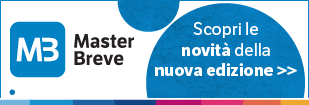We introduced the ideas of effective subject lines, salutations, and the main purpose of the communication in last week’s edition, so what’s next?
As we said before, so many emails are sent every second (2.4 billion), which means we spend a lot of our time reading and writing them. Because of this many people tend to simply scan (quickly read over) their emails to get an idea and then move on to the next one. So we need to optimise our emails for readability and ease of understanding information.
You can do this by :
- Adding bullet points
- Making paragraphs short
- Adding visuals to help break up text
If you can reduce your email to the very essentials it will help the reader understand your reason for contacting them and what their next course of action should be. Try to avoid writing long blocks of text for the same reason, we need the reader to get to the information quickly and respond appropriately.
On the subject of readability, one of the easiest fixes to an email is to choose and maintain a font. If there are several different fonts, sizes, or colours, there is a high probability it will be ignored or a confusing read. This is especially important if you are sending a sales email for the first contact, we need to make sure the recipient opens the mail and reads it! You can use a secondary font where it is genuinely required but try to use no more than two different fonts and no more than 3 different sizes.
With this in mind try to stick to one of the following fonts to make sure that the receiver’s device or browser will be compatible :
- Arial
- Courier
- Georgia
- Helvetica
- Lucida Sans
- Tahoma
- Times New Roman
- Trebuchet MS
- Verdana
Using one of these fonts gives you the greatest chance of compatibility with your readers’ email clients and limits any failure in communication.
We have looked at how to start an email and now we come to the end, just how can we finish that email in the most effective fashion? This is probably the easiest part of the email and requires the least amount of thinking or work. We just need to keep it simple and straightforward, trying to avoid a lengthy closing line that sounds more like the Spam begging emails you might receive.
Simple choose one of the following closing greetings which are organised in order of formality (the first being the most formal) :
- Sincerely
- Kind regards
- Thank you
- Warm regards
- Warm wishes
- Best regards
- Take care
With one of these closing salutations, your hard work is done and you can move on to your next task. However, there are a couple more things that you can do before sending that email to help to avoid any miscommunication or error, or to help make it slightly more effective.
A really helpful and fairly obvious tool if you are writing in a different language, is your email’s built-in spelling and grammar checker, make sure you have the correct writing language selected and those little helpful red lines should start to appear to assist in “typos” and spelling mistakes. If your email client doesn’t have one built-in, you can always use Gmail or a Word-processor to copy and paste before you send that email. Even the best of us when writing in our own language can make a typing error and it takes nothing to lose one letter of a word and cause unnecessary problems at the other end.
The other great tool that gets very often overlooked is the ability to schedule an email. If you have spent the weekend working on a project and want your reader to get it first thing Monday morning but don’t want it to get buried in all the advertising emails over the weekend, consider scheduling the sending of the email to a time that suits you. Each email client is different but for some, it’s a very simple process that can help just marginally give you an advantage in getting your email to the right person at the right time.
That’s it for now for emails, but if you have any requirements on anything in particular don’t forget to leave a comment or get in touch. We will have a look at some important and sometimes confusing Business Idioms in our next edition, so make sure you are keeping regularly updated.





















